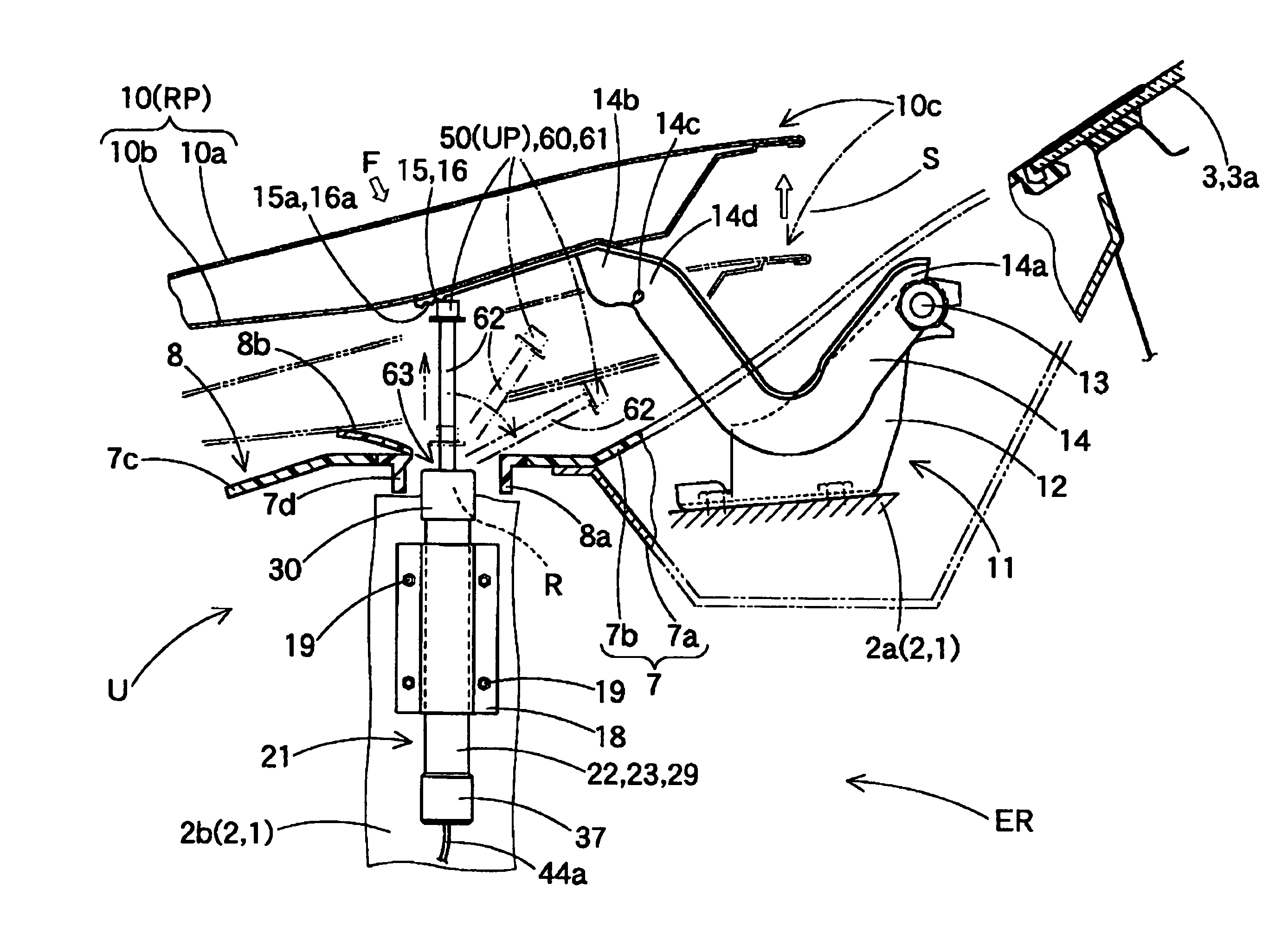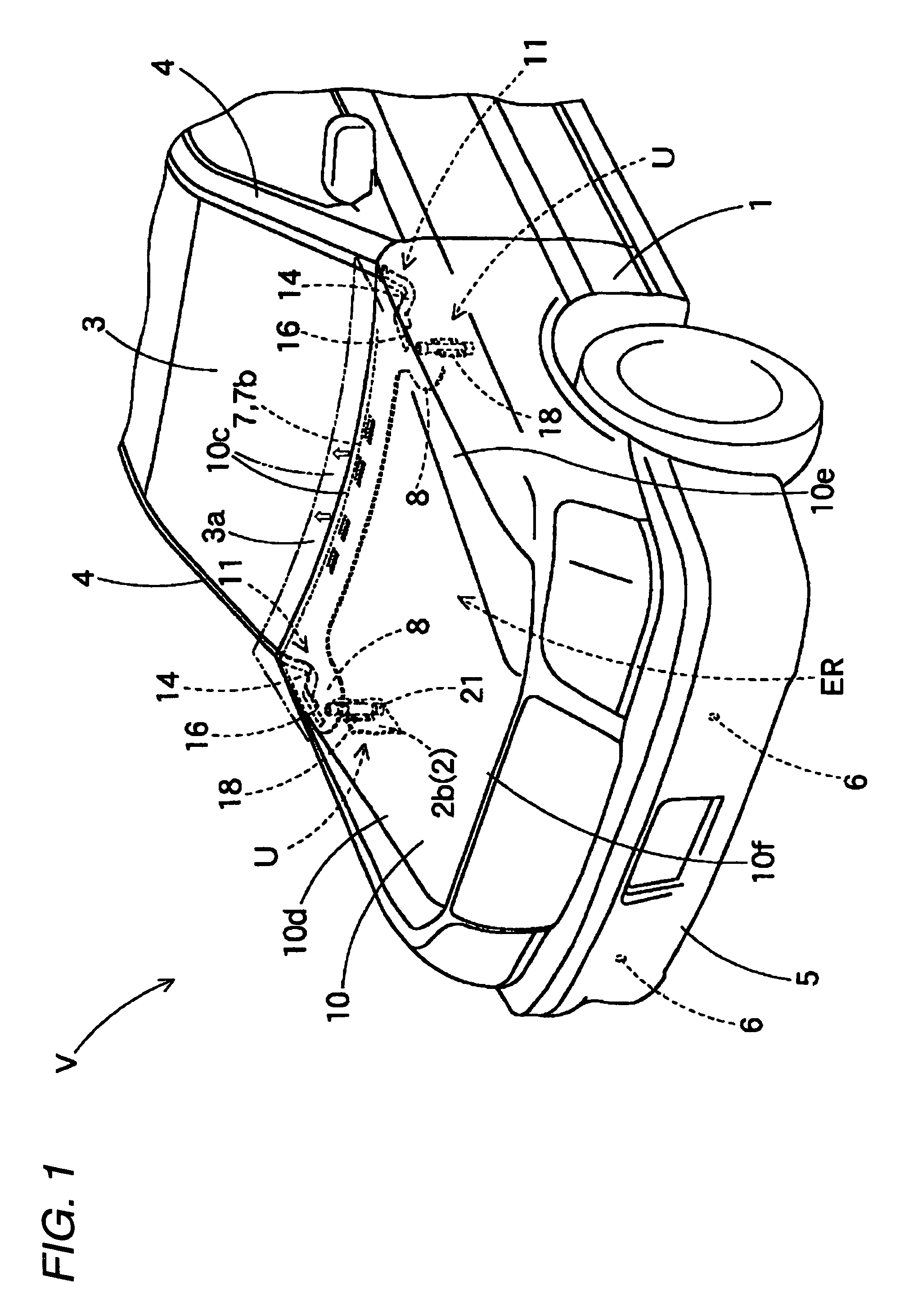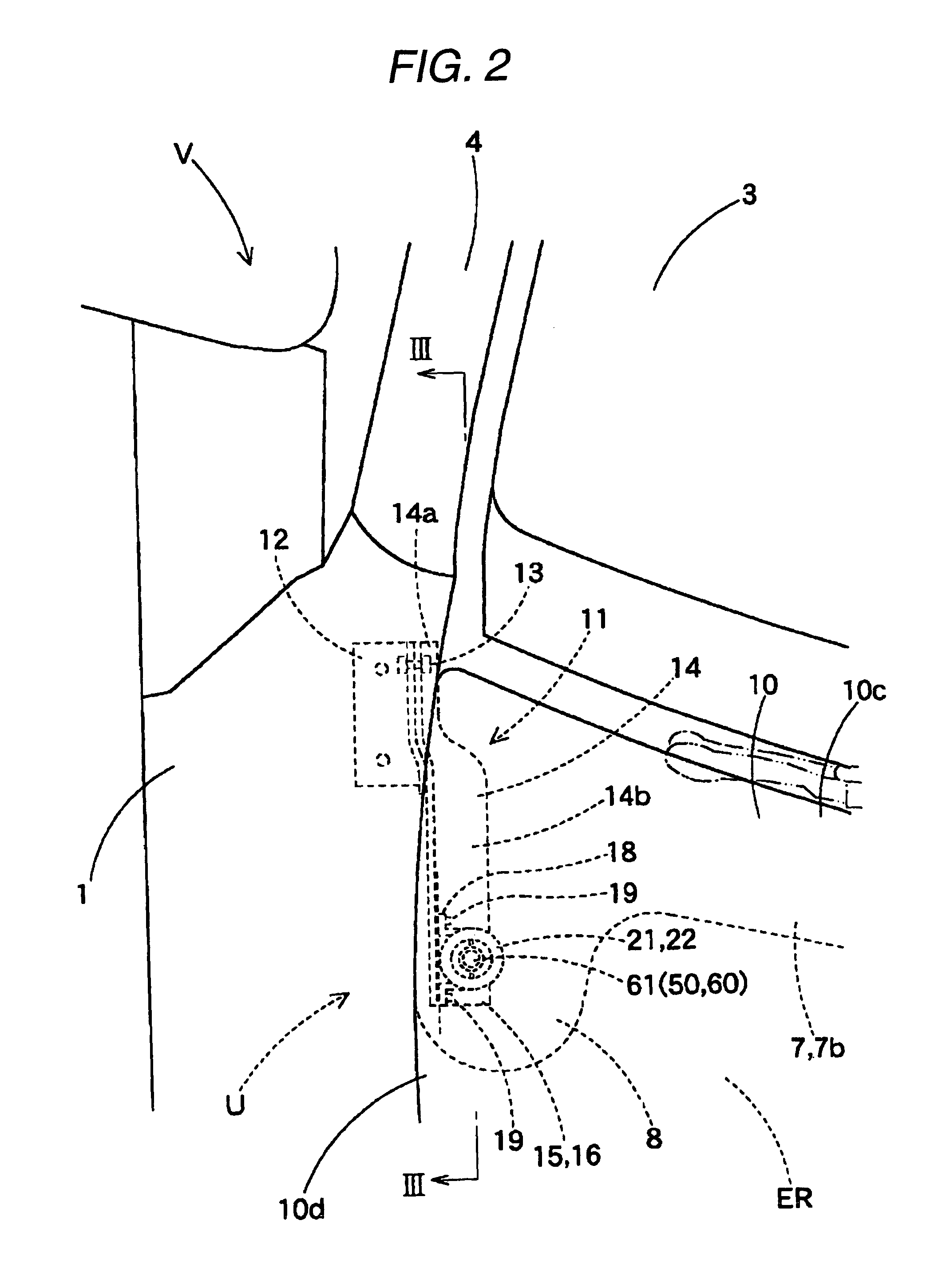Actuator
a technology of actuators and actuators, applied in the field of actuators, can solve problems such as difficulty in adjusting the amount of kinetic energy absorption
- Summary
- Abstract
- Description
- Claims
- Application Information
AI Technical Summary
Benefits of technology
Problems solved by technology
Method used
Image
Examples
Embodiment Construction
[0042]Hereinafter, an embodiment of the invention will be described based on accompanying drawings. Automotive safety equipment to which an actuator 2 of this embodiment is applied is a hood lift-up apparatus (hereinafter, referred to simply as a “lift-up apparatus”) U. This lift-up apparatus U is, as is shown in FIGS. 1, 2, such as to be disposed in positions lying near a left-hand edge 10d and a right-hand edge 10e on a rear end 10c side of a hood panel 10 of a vehicle V, respectively. Each lift-up apparatus U includes an actuator 21 and a receiving seat 16 which is disposed on a lower surface of the hood panel 10 at the rear end 10c. In addition, as is shown in FIGS. 3, 4, in the lift-up apparatus U, when it is activated, the actuator 21 raises a piston rod 50 to thereby raise the rear end 10c of the hood panel 10 in a lift-up manner via the receiving seat 16.
[0043]In addition, when used in this specification, unless described otherwise, front-rear or longitudinal and up-down or ...
PUM
 Login to View More
Login to View More Abstract
Description
Claims
Application Information
 Login to View More
Login to View More - R&D
- Intellectual Property
- Life Sciences
- Materials
- Tech Scout
- Unparalleled Data Quality
- Higher Quality Content
- 60% Fewer Hallucinations
Browse by: Latest US Patents, China's latest patents, Technical Efficacy Thesaurus, Application Domain, Technology Topic, Popular Technical Reports.
© 2025 PatSnap. All rights reserved.Legal|Privacy policy|Modern Slavery Act Transparency Statement|Sitemap|About US| Contact US: help@patsnap.com



